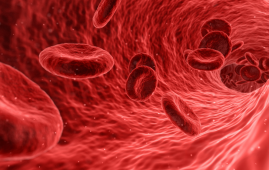

Digital breast tomosynthesis (DBT) demonstrated improved breast cancer screening outcomes compared to screening with traditional digital mammography alone in a trial including more than a million women. The study’s findings were released in Radiology.
In the US, breast cancer affects more women than any other type of cancer. Breast cancer mortality has decreased since the late 1980s as a result of advances in early identification and treatment, but it is still the most common cancer among women.
According to the American Cancer Society, the five-year relative survival rate for breast cancer is 99% when it is found early and in its localized form. The most effective way to find breast cancer early is through routine screening.
At many locations, two-dimensional (2-D) digital mammography screening alone is still the norm, although it has some drawbacks because it can’t detect all malignancies. An increasing body of research shows that DBT, a more sophisticated technology, has a greater rate of breast cancer diagnosis since it can get numerous X-ray images of the breast from various angles as opposed to the normal single image obtained with conventional 2-D mammography. Women with breast tissue that is denser will benefit the most from DBT.
“The purpose of our study was to evaluate screening outcomes among a large cohort of women in the United States who were screened with either 2-D digital mammography alone or with DBT,” said study co-author Emily F. Conant, M.D., FSBI, professor of radiology and chief in the Division of Breast Imaging at the Hospital at the University of Pennsylvania in Philadelphia.
For this retrospective cohort study, Dr. Conant and colleagues compiled data from five large healthcare systems across the United States. The study group consisted of over 1 million women aged 40 to 79 who were screened with either DBT or 2-D digital mammography alone between January 2014 and December 2020. The screening outcomes such as cancer detection and false positive rates were compared across the two screening groups.
“This study was extremely large with most women having at least 2 screens resulting in over 2 million screening exams across five large and diverse health care systems,” Dr. Conant said.
DBT was linked to significant improvements in screening outcomes over 2-D digital mammography alone. Compared to 4.5 per 1,000 women screened with 2-D digital mammography alone, the cancer detection rate for patients who had DBT screening was higher at 5.3 per 1,000 women. Moreover, the rate of false positives and recalls from screening was decreased with DBT.
“We showed that the most important mammographic screening outcomes, increased cancer detection combined with fewer false positives, were significantly improved when women were screened with digital breast tomosynthesis compared to 2-D digital mammography alone,” Dr. Conant said. “Therefore, women should seek out sites that routinely offer breast cancer screening with DBT.”
more recommended stories
 Fat-Regulating Enzyme Offers New Target for Obesity
Fat-Regulating Enzyme Offers New Target for ObesityKey Highlights (Quick Summary) Researchers identified.
 Spatial Computing Explains How Brain Organizes Cognition
Spatial Computing Explains How Brain Organizes CognitionKey Takeaways (Quick Summary) MIT researchers.
 Gestational Diabetes Risk Identified by Blood Metabolites
Gestational Diabetes Risk Identified by Blood MetabolitesKey Takeaways (Quick Summary for Clinicians).
 Phage Therapy Study Reveals RNA-Based Infection Control
Phage Therapy Study Reveals RNA-Based Infection ControlKey Takeaways (Quick Summary) Researchers uncovered.
 Pelvic Floor Disorders: Treatable Yet Often Ignored
Pelvic Floor Disorders: Treatable Yet Often IgnoredKey Takeaways (Quick Summary) Pelvic floor.
 Urine-Based microRNA Aging Clock Predicts Biological Age
Urine-Based microRNA Aging Clock Predicts Biological AgeKey Takeaways (Quick Summary) Researchers developed.
 Circadian Control of Neutrophils in Myocardial Infarction
Circadian Control of Neutrophils in Myocardial InfarctionKey Takeaways for HCPs Neutrophil activity.
 E-Cigarette Use and Heart Attack Risk in Former Smokers
E-Cigarette Use and Heart Attack Risk in Former SmokersKey Takeaways for Clinicians and Nurses.
 36-Week Pre-eclampsia Screening May Reduce Term Risk
36-Week Pre-eclampsia Screening May Reduce Term RiskA New Preventive Strategy for Term.
 Cardiovascular Risk and Sudden Cardiac Death in Diabetes
Cardiovascular Risk and Sudden Cardiac Death in DiabetesRising Sudden Cardiac Death (SCD) Risk.

Leave a Comment